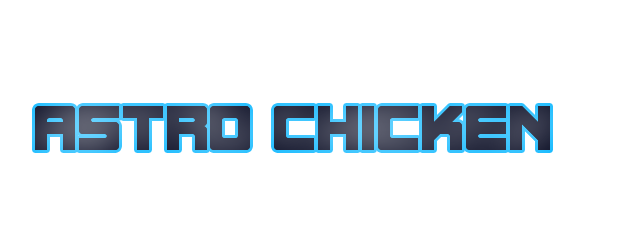I recently purchased a Roland MC-4 sequencer from a friend for a very good price (about half of the going price). It was basically working fine except for a couple of minor gripes: 1. The "0" keypad button had a broken shaft, so the button cap that's supposed to go on top of the x-shaped shaft was loose. 2. Most of the push buttons needed some "after touch" to work properly, some more, some less. 3. The two-position momentary "mode" toggle switch was missing its return spring. In fact, as I learned from the previous owner, the original part had been replaced with a toggle switch that never had a return spring. That means that every time I pushed the toggle switch down I then had to manually return it back to the upper position, otherwise the MC-4 would freeze before the toggle went back up (which would happen automatically if a return spring is installed). Why Roland would use a toggle switch when they could simply have used a push button is beyond me.
 |
| Roland MC-4 post-restoration |
So I asked my friend and personal technician Mr. K from the Ruhrgebiet if he could fix these issues with my MC-4. He agreed: Challenge accepted! He soon realized that tracking down the original ALPS parts for the push buttons would be very difficult and expensive. He opted for Cherry computer keyboard buttons instead. They are readily available and are a proven industry standard with many thousand life cycles! It turned out that the Cherry buttons have different physical dimensions, especially the metal contacts that are supposed to go through the holes in the mainboard. So Mr. K devised a cunning method of inserting an adapter socket between the board and the base of the Cherry button: One adapter per switch. That's a huge amount of work involved and hours of soldering fun guaranteed! The button caps needed to be glued on top of the shafts since the "x"-shaped ends of the shafts are a bit smaller than on the original ALPS ones.
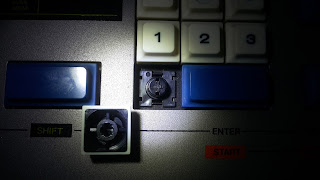 |
| Roland MC-4 with broken ALPS push button |
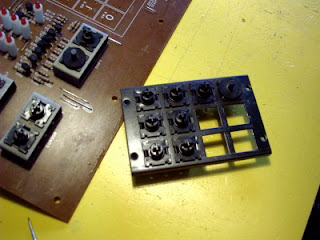 |
| Roland MC-4 numeric keypad with original ALPS push buttons |
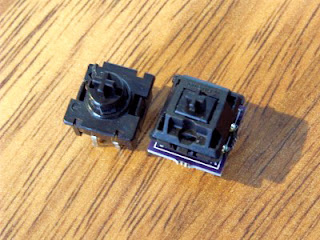 |
| Roland MC-4 original ALPS (left) vs. Cherry replacement (right) push button |
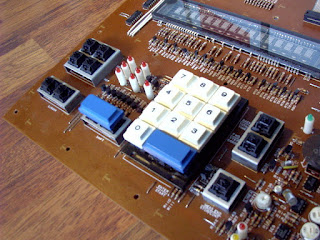 |
Roland MC-4 with new Cherry replacement push buttons
|
Like we say in German: Said, done! Mr. K bravely accomplished this Herculean task and replaced all 21 push buttons. Now they work as new! Maybe even better...
The momentary "mode" toggle switch with the return spring was a tricky part to track down. But Mr. K made it happen! Since it was impossible to find a 2-position toggle switch with return spring, he instead came up with a 3-position toggle switch with return spring on one side. So, the toggle would latch in the top and in the middle position but return to the middle (thanks to the return spring) when pushed to the down position. Just what we needed! The action of the toggle switch is now momentary, like on the original MC-4! I suspect that the original part is actually the same 3-way toggle switch that we used, so Roland themselves may have used this 3-position toggle switch in this peculiar way. What a weird design!
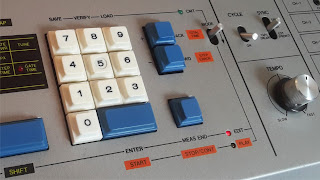 |
| Roland MC-4 numeric keypad and 2-position "mode" toggle switch |
Mr. K also recapped the power supply. That's his philosophy: When you have a vintage synth on your bench, you should replace the ELCOs before they dry up completely and possibly damage your machine. After all. in the case of the MC-4 the ELCOs were more than 35 years old!
My Roland MC-4 now looks and feels amazing and operates beautifully. Thank you Mr. K!





